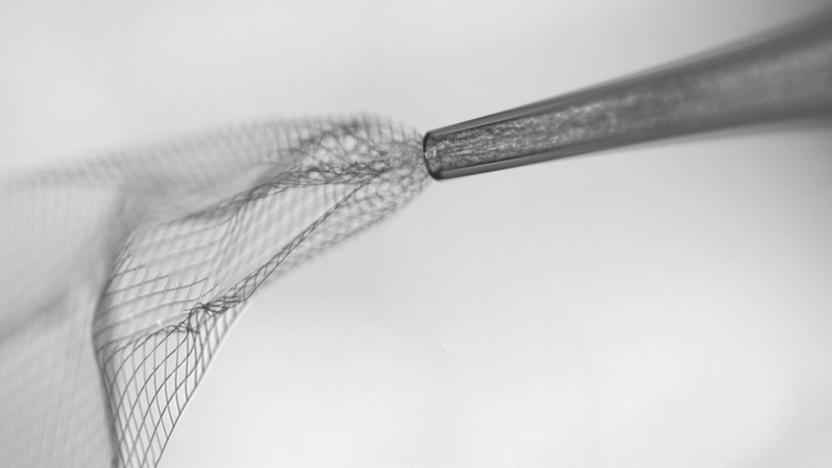wiremesh
Latest

Brain-fixing injectable wires will soon be tested on humans
Last year, a team of Harvard University researchers revealed that they created a wire mesh doctors can inject into the brain to help treat Parkinson's and other neurological diseases. They already successfully tested it on live mice, but now that technology is ready for the next stage: human testing. The mesh made of gold and polymers is so thin, it can coil inside a syringe's needle and doesn't need extensive surgery to insert. Once it's inside your head, it merges with your brain, since the mesh has spaces where neurons can pass through.

iPad 2 features a thinner bezel, flat back, and chunky wide-range speaker?
Nothing says truthiness quite like anonymous Chinese sources telling next generation iPad secrets to a Japanese blog lacking any notable successes on the professional rumor mongering circuit. Nevertheless, the Apple rumor sites have jumped all over the story like a Bay Area cop on prototype thief. So here's the dirt, which certainly seems plausible in its specificity: a 3-mm reduction in bezel width, same 9.7-inch display size, and flattening of the back allowing it to rest wobble-free on a desktop. Mac Otakara also explains that there's a "wide-range speaker" covered with "metal mesh" (that's their render above) occupying the cut-out we saw at the bottom of those supposed next-generation iPad cases. The overall unit is said to measure 239 x 186 mm compared to the current iPad's 242.8 x 189.7 mm footprint. Suspiciously, the site was unable to reliably confirm the existence of front of rear facing cameras but does claim that the new iPads will begin shipping from factories in January -- timing that aligns nicely with previous rumors. After the break you'll find another purported iPad 2 case with yet another render of the speaker grill design.
